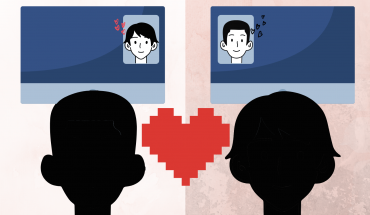SUPPORT ANIMALS HELP OUT STUDENTS ON CAMPUS
By Gemma Carretta, Staff Writer
Talia Martinez is a sophomore at Mason majoring in integrated studies with a legal studies concentration. She is also one of the few students on campus who is allowed to keep an emotional support animal in the dorms.
Her calico cat, Pi, is only five months old, but she does a lot more than attempt to chase squirrels up trees and receive attention from Mason students who miss their own pets back home.
As an emotional support animal, Pi’s role is to help Martinez “find a purpose” in her daily life outside of classes. The kitten “gives me a reason to get out of bed in the morning,” according to Martinez.
While both emotional support animals and service dogs provide their owners with much-needed assistance, the qualifications for each animal and the reasons behind needing them are different.
“An emotional support animal is an accommodation request that is processed by our office and reviewed by a committee,” explained Jason Northrup, Mason’s associate director of disability services. “Service animals are defined as dogs that are individually trained to do work or perform tasks for people with disabilities.”
Dylan Arthur, a senior majoring in business management, wants to teach students and faculty at Mason about service dogs and disability rights. He was inspired by incidents at other Virginia colleges where students like him were told their service dogs were not allowed in the classroom.
Arthur has partnered with the Mason’s Office of Disability Services and the Student Health Advisory Board to create educational programs about service animal awareness that will “integrate into school orientation, and have a spring campaign each year,” he said.
His own service dog, Bella, “is with me all the time” according to Arthur. Bella is trained to notice symptoms of Arthur’s PTSD even before he does – the dog is “able to pick up on the triggers for me,” said Arthur.
Arthur has been training Bella since she was just six weeks old. Now, at four and a half, she goes everywhere with him.
“I developed a close bond,” Arthur explained. “I am ‘mom’ to her.”
According to the Americans with Disabilities Act, “the tasks performed by the [service] dog must be directly related to the person’s disability.” This means that there is no instruction manual for training your own dog, according to Arthur.
“Training is a continuous process,” said Arthur. “I started noticing her behavior when I would get triggered and encouraged that behavior.”
He started practicing with Bella by positively reinforcing her protective behaviors whenever he was triggered. Now, when Bella notices an increase in his breathing or heart rate, she will perform her own protective acts such as licking his face to “reel Arthur out” of situations that could aggravate his PTSD.
Arthur’s service dog, Bella, also had to pass the public access test by Assistance Dogs International. The test is a requirement for any service dog that determines whether or not they can behave safely professionally in public.
In order for Pi to live with her on campus, Martinez and her counselor had to go through Mason’s office of disability services. She explained that they spent a couple months filling out paperwork and going through interviews before Martinez’s case was approved. Although Pi cannot go with her into most campus buildings except for the MIX and residence halls, her cat still provides Martinez with valuable psychological support.
While her cat helps Martinez work through her depression, she clarified that there is no uniform reason as to why people have emotional support animals.
“It depends on each individual on why they have the animal,” said Martinez, because each student needs different types of service.
During the summer between her freshman and sophomore years at Mason, Martinez decided that she needed an emotional support animal like Pi to help her. Since Pi was only ten weeks old, Martinez has been training Pi to fit her needs.
Martinez explained that because there is no formal training, each person must train their own animal to fit their specific needs for emotional support. Most of what she has worked on with Pi is harness training for walks around campus and having Pi stay with her in the dorms while she sleeps.
“[And] obviously, litterbox training,” Martinez added with a laugh.
Photos Courtesy of Dylan Arthur and Allie Thompson





